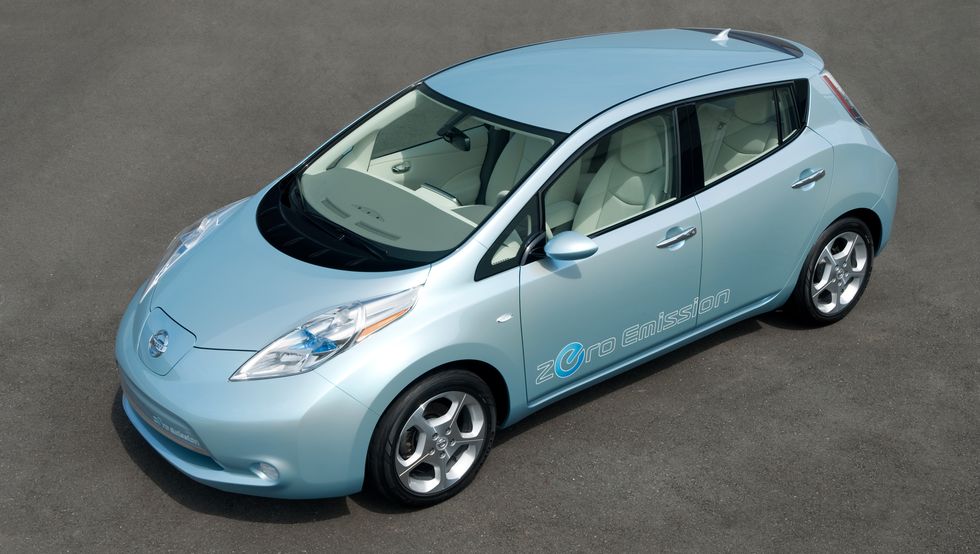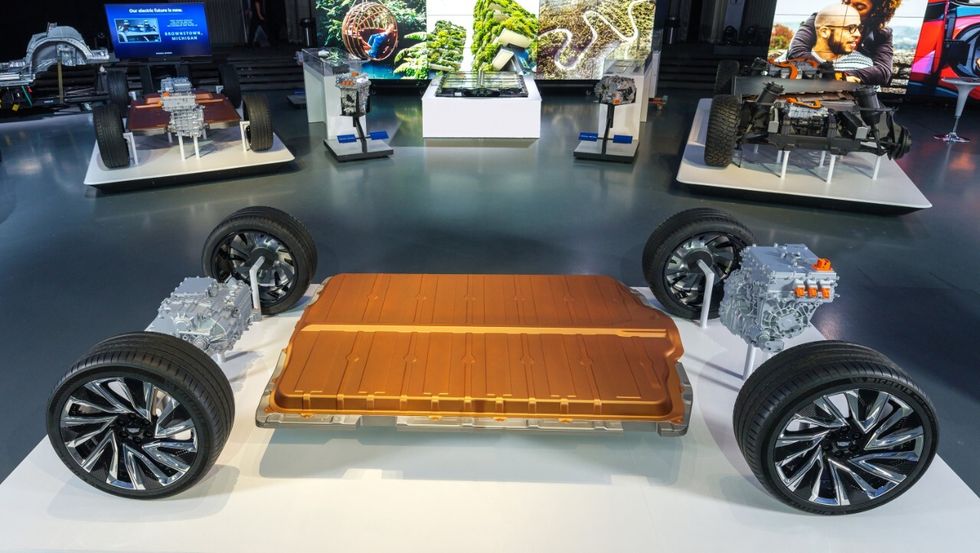The Nissan Leaf was the first mass-market electric car sold in the United States. Yes, there were EVs available before the Leaf (General Motors’ EV1 and Tesla’s Roadster are two well-known examples), but it was Nissan that tried to thread the needle of zero-emission mobility with a cost of entry low enough to sell tens of thousands—as opposed to a few hundred or thousand—of EVs to interested customers.
Since the Leaf’s arrival for the 2011 model year, the number of electric cars available in the U.S. has drastically increased. Even better, today’s electric cars pack EPA driving ranges well into triple digits (the first Leaf offered just 73 miles of range), and some wear sticker prices that close in on parity with their gas equivalents. If you’ve ever wondered “How much does an electric car cost?”, then the Leaf’s decade-plus turn in the U.S. market offers a good look at how these battery-powered vehicles’ price has evolved over the years.
Cost of Electric Cars Compared to Gas-Powered Cars
The original Nissan Leaf wore a starting price of $33,600. Though we wrote the “initial investment” of our long-term 2011 Leaf was a “steep one” we also noted that, “we spent much less to run the car than we would a similar gas-powered hatchback.”
Nissan promoted the original Leaf to the masses with the message that recharging its battery pack came at a cost of $3.00 or less. The automaker even added that its electric hatch was less expensive to keep energized than a gas-powered car rated at 25 mpg. That is, as long gasoline stayed above $1.10 per gallon.
Yet, even accounting for the then-available federal tax credit of $7000, the Leaf’s cost of entry remained notably higher than that of the similarly sized Nissan Sentra, which stickered for less than $17,000 in 2011. Ignore the tax credit’s impact, and the delta between the least expensive electric Leaf and gas-powered Sentra in 2011 totaled more than $15,000. Account for inflation and that figure balloons to nearly $20,000.
Fast forward to today, and the delta between the 2024 Sentra and 2024 Leaf (which start at $21,745 and $29,295, respectively) sits at $7550—that difference shrinks to $3800 when accounting for the $3750 tax credit the federal government offers on the 2024 Leaf through the end of 2023. (It’s possible the electric hatchback will retain that credit next year, too, but the government has yet to release a list of EVs that qualify for either half or the full $7000 tax credit under its updated 2024 calendar-year requirements.) Don’t forget, the base Leaf S now offers a minimum of 149 miles of EPA-rated range, with the pricier SV Plus’s larger battery pack netting more than 200 miles of range on a full charge.
Costs of Powering an Electric Car
The rapidly dropping cost of electric cars is complemented by the fact EVs are generally cheaper to fuel than gas-powered models, and they also tend to have less scheduled maintenance. However, as we learned with our long-term Tesla Model 3, even though EVs don’t require regular oil changes, service costs and normal wear items such as tires (which, in the case of the Model 3 wore out sooner than is typical on gas-powered vehicles) can still add up. Of course, many factors come into play here with the cost of electricity and gas, as well as the efficiency of a given model, altering just how cost-efficient an electric vehicle is. For instance, some bigger electric vehicles, such as the GMC Hummer EV, obviously aren’t going to have the energy efficiency of smaller EVs.
Even so, the relative stability of electricity prices ought to bring an additional piece of mind to EV owners. Gas prices have fluctuated wildly since Nissan kicked off sales of the Leaf. Did anyone else laugh to themselves at Nissan’s note about $1.10 for a gallon of gas? According to the U.S. Energy Information Administration, the average residential cost for a kilowatt-hour (kWh) of electricity was just under $0.17 in September 2022. In September 2023, it was a smidge over $0.17.
At that price, fully charging a new Leaf S’s 40.0-kWh battery pack would cost approximately $6.84. Admittedly, charging inefficiencies are likely to raise this sum a small amount. Even so, netting 149 miles of EPA-rated driving range for less than one Hamilton seems like a reasonable sum given it’d take $37.20 to fill a Sentra’s 12.4-gallon tank at $3.00 per gallon. This figure rises to $49.60 at $4.00 per gallon. Sure, the Sentra’s combined figure of up to 34 mpg means it can go nearly three times as far on a full tank than a Leaf S on a full charge, but the gas-powered sedan’s per-mile cost is still about two times that of its battery-electric sibling.
That said, EV drivers who rely primarily on pricier pay-per-use public fast chargers may see little or no difference in the amount they spend on charging relative to the cost of filling up a given gas-powered car at a fuel pump. That’s because the cost of energy from a fast charger is roughly three to four times more expensive than what you pay at home.
How much an EV costs is dependent on numerous factors. Nevertheless, the price of electric cars continues to come closer and closer to parity with their gas kin. Factor in the potential savings that come with charging at home, and it’s safe to say electric cars no longer carry the significant cost difference over gas-powered cars they once did
Cost of Replacing an Electric Car’s Battery
It’s no secret that replacing an EV’s old battery pack with a new one will set you back thousands of dollars. Fortunately, automakers put lengthy warranties of at least eight years or 100,000 miles on their battery packs due to federal law. (Mandated coverage in California is even longer: 10 years or 150,000 miles.)
Batteries are also far more reliable than skeptics will lead you to believe, often lasting well into six-figure odometer digits and usually degrading at a very slow pace. Replacing an old battery pack won’t come cheap, but neither is replacing the engine of a car with an internal combustion engine.
Contributing Editor
Sebastian Blanco has been writing about electric vehicles, hybrids, and hydrogen cars since 2006. His articles and car reviews have appeared in the New York Times, Automotive News, Reuters, SAE, Autoblog, InsideEVs, Trucks.com, Car Talk, and other outlets. His first green-car media event was the launch of the Tesla Roadster, and since then he has been tracking the shift away from gasoline-powered vehicles and discovering the new technology’s importance not just for the auto industry, but for the world as a whole. Throw in the recent shift to autonomous vehicles, and there are more interesting changes happening now than most people can wrap their heads around. You can find him on Twitter or, on good days, behind the wheel of a new EV.

Contributing Editor
Brendan McAleer is a freelance writer and photographer based in North Vancouver, B.C., Canada. He grew up splitting his knuckles on British automobiles, came of age in the golden era of Japanese sport-compact performance, and began writing about cars and people in 2008. His particular interest is the intersection between humanity and machinery, whether it is the racing career of Walter Cronkite or Japanese animator Hayao Miyazaki’s half-century obsession with the Citroën 2CV. He has taught both of his young daughters how to shift a manual transmission and is grateful for the excuse they provide to be perpetually buying Hot Wheels.





